Sculpey Oven Bake Clay requires precise baking to achieve professional results. Preheat your oven, use parchment paper, and bake at 275°F (135°C) for 15-30 minutes per 1/4 inch thickness. Following instructions ensures optimal outcomes.
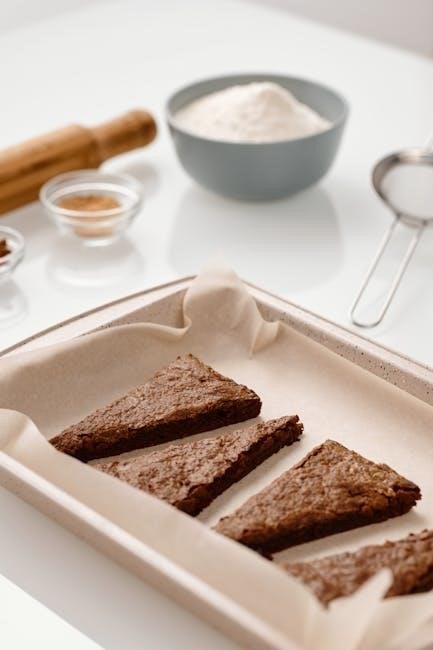
Overview of Sculpey Oven Bake Clay
Sculpey Oven Bake Clay is a versatile polymer clay designed for crafting and artistic projects. It is known for its pliable texture and vibrant colors, making it ideal for modeling, sculpting, and jewelry-making. This clay is cured in a home oven, eliminating the need for specialized equipment. The baking process is straightforward, allowing both beginners and experienced crafters to achieve professional results. Proper handling and preparation ensure durability and longevity of the finished pieces, making Sculpey a favorite among crafters worldwide.
Importance of Following Instructions
Adhering to Sculpey Oven Bake Clay instructions is crucial for achieving desired results. Proper preheating, baking time, and temperature ensure the clay cures correctly, preventing underbaking or overbaking. Following guidelines helps maintain the integrity and durability of the finished piece. Deviating from instructions can lead to structural weaknesses or uneven curing. Always refer to the package or reliable sources for specific details, as improper techniques may result in damaged or unusable creations. Safety and quality depend on careful adherence to the provided instructions.
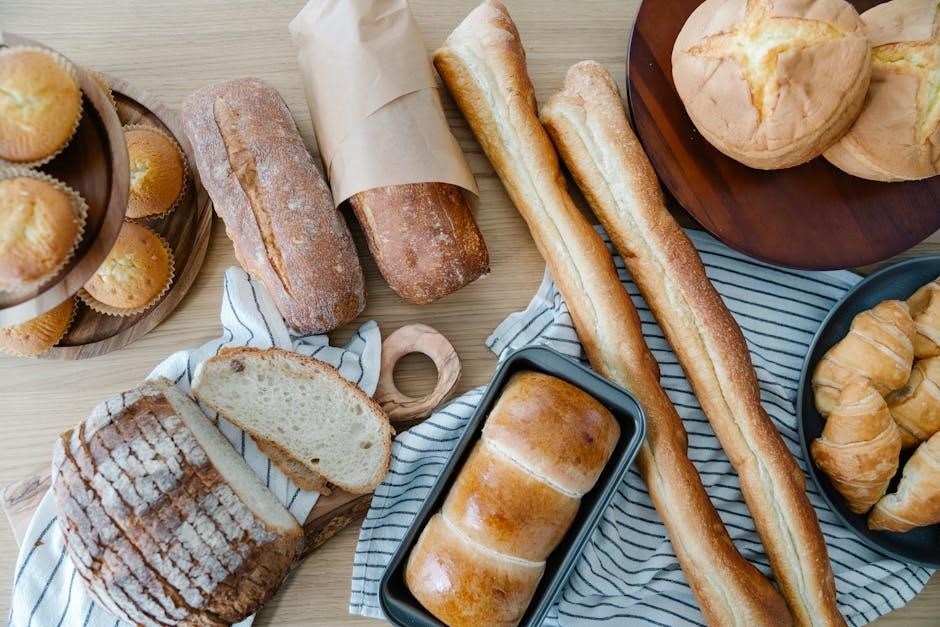
Preparation Steps Before Baking
Preheating the oven to 275°F (135°C) and lining a baking tray with parchment paper are essential. Place clay figures evenly, ensuring space between them for proper air circulation during baking.
Preheating the Oven
Preheating your oven to 275°F (135°C) is crucial for baking Sculpey clay. Use an oven thermometer to ensure accuracy, as incorrect temperatures can affect results. Allow the oven to reach the desired temperature before placing clay pieces inside. This step ensures even baking and prevents underbaking or overbaking. Never use a microwave for this process, as it can cause uneven heating and damage the clay. Proper preheating is essential for achieving the best outcomes with Sculpey Oven Bake Clay.
Preparing the Baking Surface
Line your baking tray with parchment paper to prevent the clay from sticking and to ensure easy removal after baking. Avoid using aluminum foil or wax paper, as they can transfer unwanted textures or chemicals to the clay. Clean and dry the surface thoroughly before placing the clay pieces on it. Proper preparation helps protect your creations and ensures smooth, even baking. Always space items evenly to allow proper airflow during the baking process.
Placing the Clay Figures
Gently place your clay figures on the prepared baking surface, ensuring they are spaced evenly. Avoid overcrowding, as this can cause uneven baking. For larger pieces, consider using supports like foil or paper mâché to maintain shape. Ensure the clay is flat and stable on the surface. Handle pieces carefully to prevent distortion or breaking. Proper placement ensures consistent results and prevents damage during baking. Always double-check the arrangement before starting the oven.
Baking Process
Bake Sculpey Oven Bake Clay at 275°F (135°C) for 15-30 minutes per 1/4 inch thickness. Use an oven thermometer for accuracy. Avoid microwaving.
Recommended Temperature and Time
The ideal temperature for baking Sculpey Oven Bake Clay is 275°F (135°C). Bake for 15-30 minutes per 1/4 inch of thickness. Ensure your oven is preheated accurately using an oven thermometer. This consistent temperature and timing ensure the clay cures properly, achieving a durable finish. Always follow package instructions for specific clay types, as some may vary slightly. Proper baking prevents underbaked or overbaked pieces, ensuring your creations are strong and long-lasting.
Thickness Guidelines for Baking
Thickness plays a crucial role in baking Sculpey Oven Bake Clay. For every 1/4 inch of clay thickness, bake for 15-20 minutes at 275°F (135°C). Measure thickness accurately to ensure proper curing. Thicker pieces, such as 1/2 inch, require 30-40 minutes. Avoid uneven thickness to prevent underbaked or overbaked areas. Use a ruler or caliper for precise measurement. Always follow these guidelines to achieve a sturdy, durable finish. Proper thickness ensures your creations bake evenly and maintain structural integrity.
Monitoring the Baking Process
Monitoring the baking process is essential for achieving perfect results with Sculpey Oven Bake Clay. Use an oven thermometer to ensure the temperature remains steady at 275°F (135°C). Avoid opening the oven during baking, as this can cause uneven heating. Check for slight firmness and a matte finish to confirm doneness. Overbaking may cause discoloration or cracking. Stay attentive to prevent overheating, especially for intricate designs. Proper monitoring ensures your creations bake evenly and retain their intended shape and appearance.

Cooling and Handling After Baking
After baking, let the clay cool completely on a heat-resistant surface. Handle cooled pieces with care to avoid damage. Avoid exposure to moisture until fully set.
Proper Cooling Techniques
After baking, allow Sculpey clay to cool completely on a heat-resistant surface like parchment paper or a ceramic tile. Avoid rushing the cooling process, as sudden temperature changes can cause cracking. Do not submerge in water or expose to moisture until fully cooled. Once cooled, handle the pieces gently to prevent breakage. Proper cooling ensures the clay retains its shape and durability. Cooling times may vary depending on thickness, so patience is key for optimal results.
Handling the Clay After Baking
After cooling, handle Sculpey clay gently to avoid breakage. Avoid exposing baked pieces to moisture until fully cooled. Once cooled, you can sand, paint, or seal the clay for added finishes. Handling should be done carefully, as baked clay can be brittle. Avoid using harsh chemicals or abrasive materials that may damage the surface. Proper handling ensures your creations remain intact and ready for display or further crafting. Always handle baked clay with clean, dry hands to maintain its quality and appearance.
Tips and Best Practices
Always use an oven thermometer for accurate temperature control. Allow clay to cool in the oven before handling to prevent cracking and ensure even hardening.
Using an Oven Thermometer
An oven thermometer ensures accurate temperature control, crucial for Sculpey clay. Place it in the center of the oven to verify the temperature matches the dial. This prevents underbaked or overbaked pieces. Regularly check the thermometer during baking to maintain consistent heat, especially for thicker pieces requiring longer bake times. Accurate temperature control is essential for achieving the desired finish and durability of your Sculpey creations.
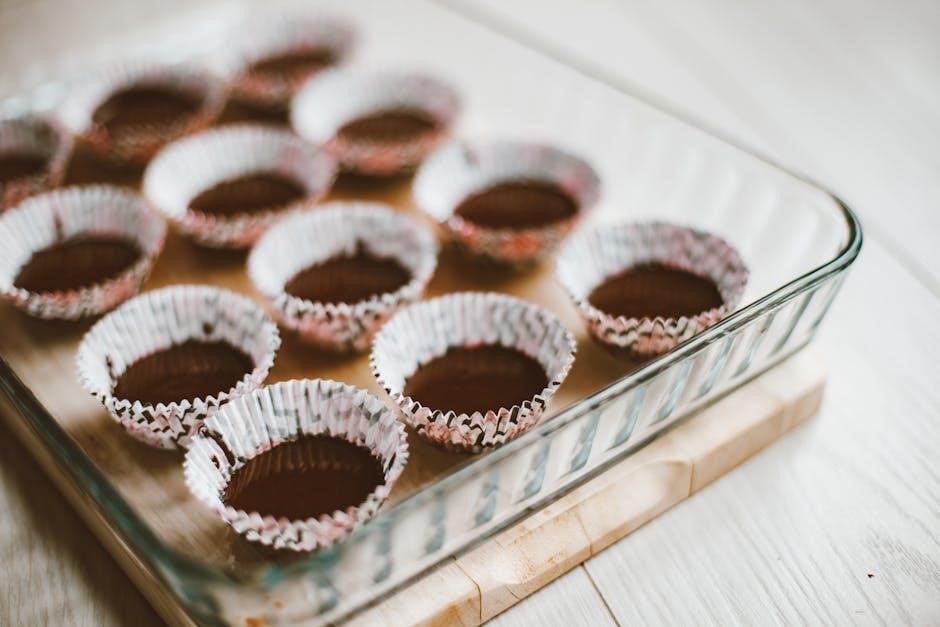
Avoiding Common Mistakes
Common mistakes when baking Sculpey clay include incorrect oven temperature and uneven spacing of pieces. Always preheat the oven and use a thermometer to ensure accuracy. Avoid overcrowding the baking tray, as this can cause pieces to stick together. Never bake at temperatures higher than recommended, as this can lead to warping or discoloration. Additionally, avoid microwaving, as it can cause uneven curing. Following these guidelines ensures successful results and prevents damage to your creations.
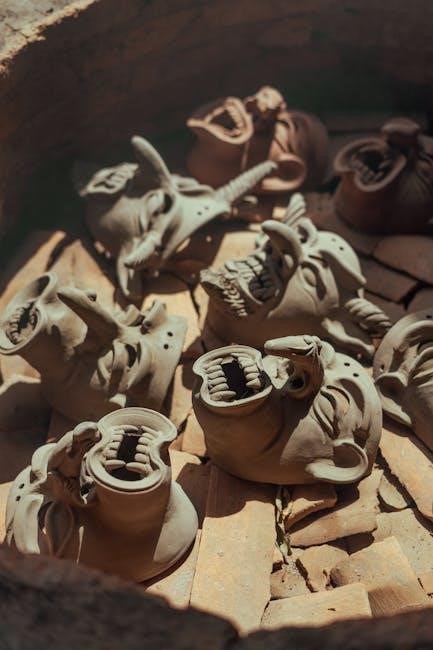
Troubleshooting Common Issues
Common issues with Sculpey clay include underbaking or overbaking. If underbaked, rebake at 275°F for additional time. For overbaked clay, sand lightly to smooth edges. Ensure proper oven temperature using a thermometer to avoid these problems.
Fixing Underbaked or Overbaked Clay
If your Sculpey clay is underbaked, it may feel soft or pliable. Return it to the oven at 275°F (135°C) for additional time in 5-minute increments until firm. Overbaked clay can become brittle or discolored. For minor cases, lightly sand the surface to smooth edges. Avoid using damaged pieces for load-bearing projects. In severe cases, re-bake or apply a fresh layer of clay to cover imperfections. Always monitor baking time and temperature to prevent these issues.
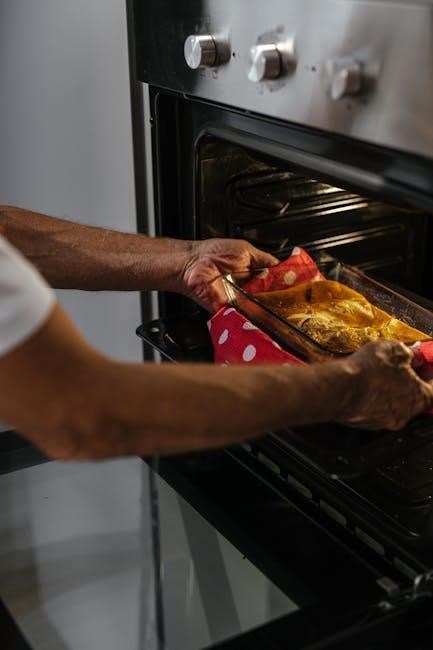
Safety Precautions
Always use an oven thermometer and avoid overheating. Keep children away, as baking should only be done by adults. Never bake in a microwave.
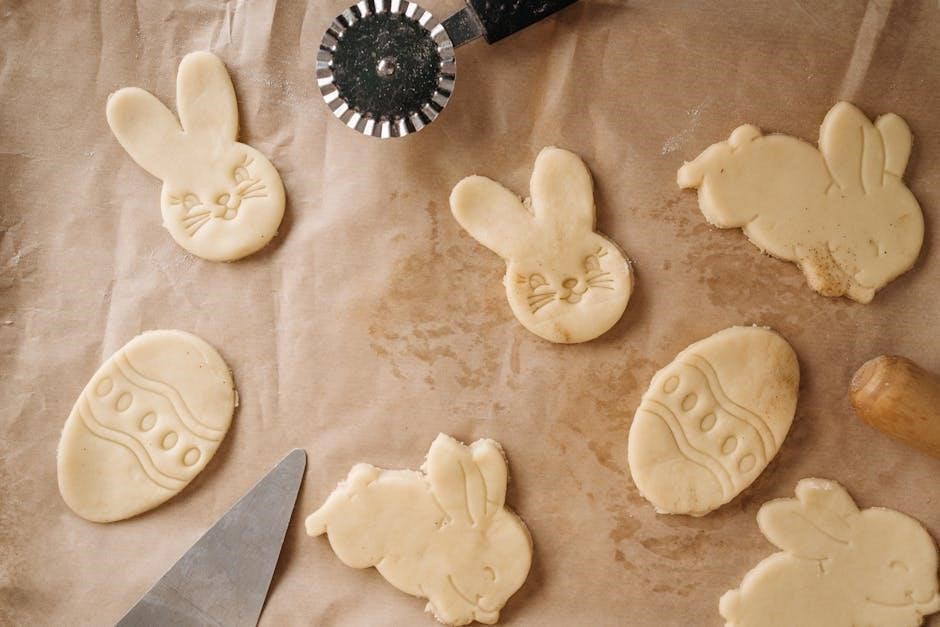
Important Safety Guidelines
Always use an oven thermometer to ensure accurate temperatures. Baking should only be done by adults, and never in a microwave. Avoid overheating, as it can release harmful fumes. Ensure good ventilation in the baking area. Handle hot baked items with care using oven mitts or tongs. Keep children and pets away from the oven and baked pieces. Follow these guidelines to ensure a safe and successful baking experience.
Storage and Maintenance
Store leftover Sculpey clay in a cool, dry place to maintain pliability. Keep tools and surfaces clean with soap and water after use. Regular maintenance ensures longevity.
Storing Leftover Clay
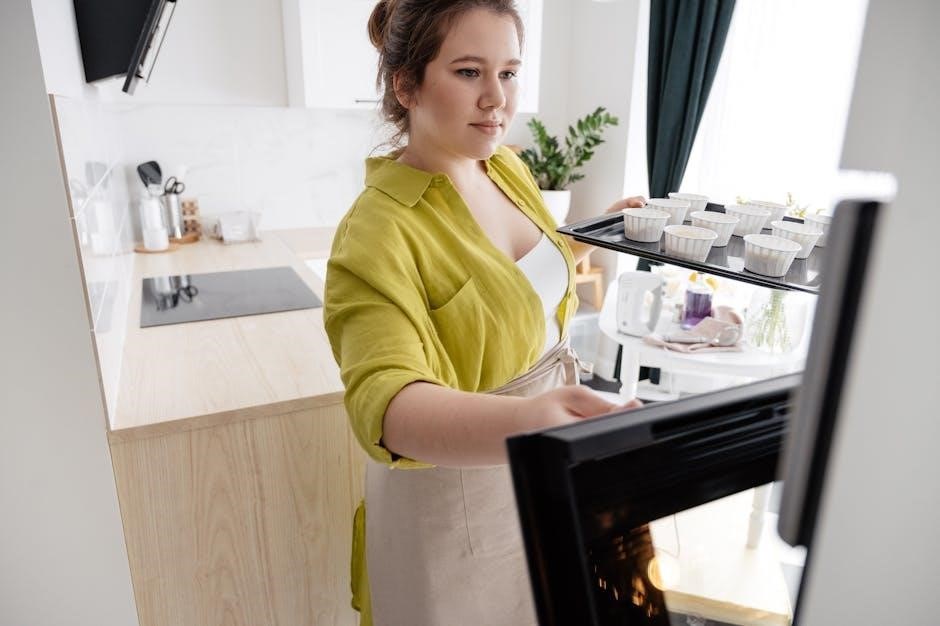
Store leftover Sculpey clay in a cool, dry location to prevent drying out. Wrap tightly in plastic wrap or place in an airtight container. Avoid exposure to heat or moisture. Ensure the storage area is clean and free from dust. Proper storage maintains clay pliability for future use. Always clean tools and surfaces before storing to prevent contamination. This ensures optimal condition for next projects.
Cleaning Tools and Surfaces
Cleaning tools and surfaces is essential for maintaining the quality of your Sculpey Oven Bake Clay projects. After use, wash tools with mild soap and water to remove any clay residue. Avoid using harsh chemicals or abrasive cleaners, as they may damage your tools. Dry all tools thoroughly to prevent rust or corrosion. Regular cleaning ensures your tools remain in good condition for future projects. Properly store leftover clay in a cool, dry place to keep it fresh and ready for use.
